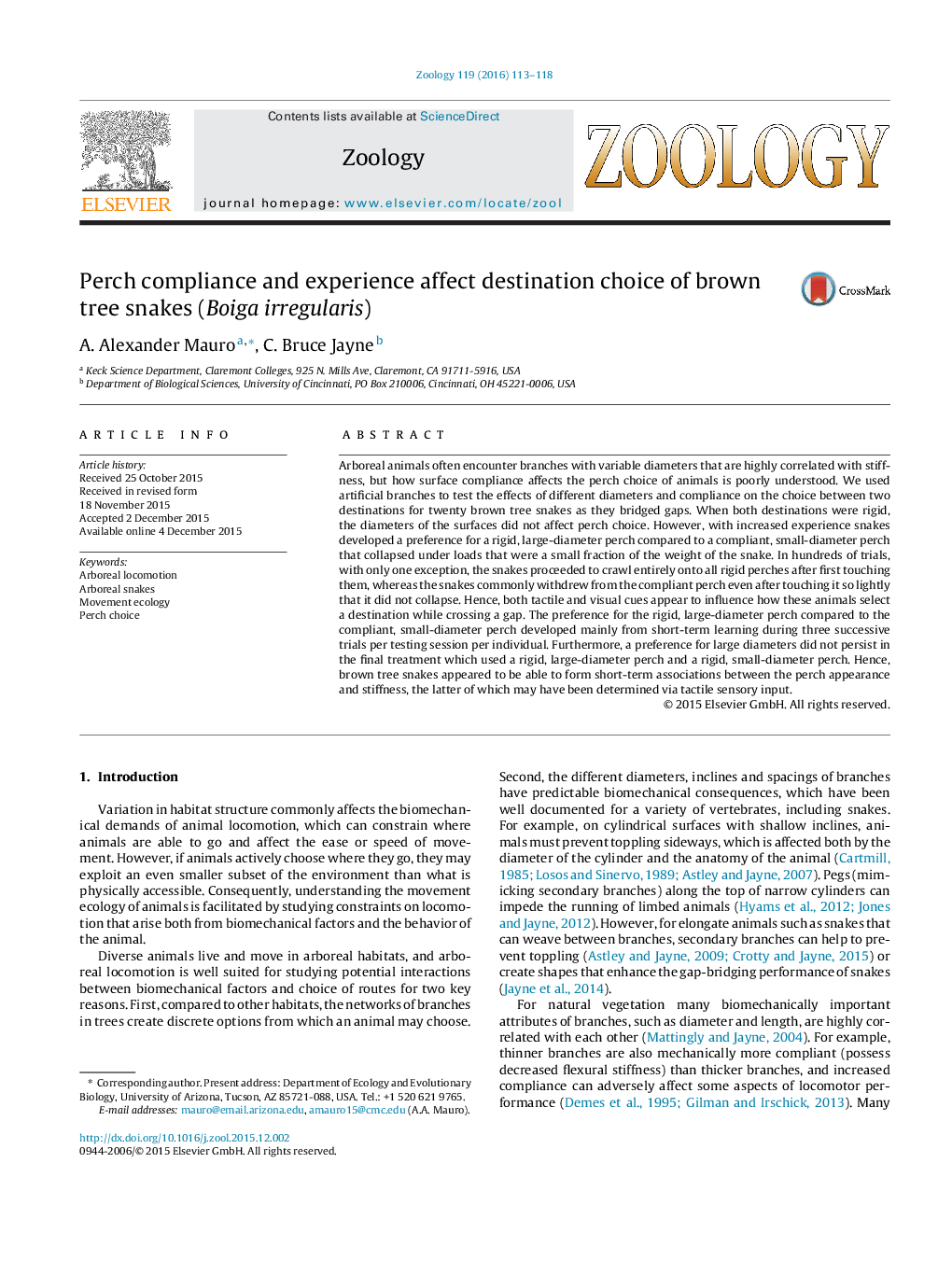| Article ID | Journal | Published Year | Pages | File Type |
|---|---|---|---|---|
| 2790973 | Zoology | 2016 | 6 Pages |
•Brown tree snakes used visual and tactile cues to select destination perches.•The snakes transferred their weight to the destination across a gap very gradually.•Increased experience with a compliant perch led to it being avoided.•Associating perch diameter and compliance may have biased perch choice.•Any association made between visual and tactile cues did not persist.
Arboreal animals often encounter branches with variable diameters that are highly correlated with stiffness, but how surface compliance affects the perch choice of animals is poorly understood. We used artificial branches to test the effects of different diameters and compliance on the choice between two destinations for twenty brown tree snakes as they bridged gaps. When both destinations were rigid, the diameters of the surfaces did not affect perch choice. However, with increased experience snakes developed a preference for a rigid, large-diameter perch compared to a compliant, small-diameter perch that collapsed under loads that were a small fraction of the weight of the snake. In hundreds of trials, with only one exception, the snakes proceeded to crawl entirely onto all rigid perches after first touching them, whereas the snakes commonly withdrew from the compliant perch even after touching it so lightly that it did not collapse. Hence, both tactile and visual cues appear to influence how these animals select a destination while crossing a gap. The preference for the rigid, large-diameter perch compared to the compliant, small-diameter perch developed mainly from short-term learning during three successive trials per testing session per individual. Furthermore, a preference for large diameters did not persist in the final treatment which used a rigid, large-diameter perch and a rigid, small-diameter perch. Hence, brown tree snakes appeared to be able to form short-term associations between the perch appearance and stiffness, the latter of which may have been determined via tactile sensory input.
